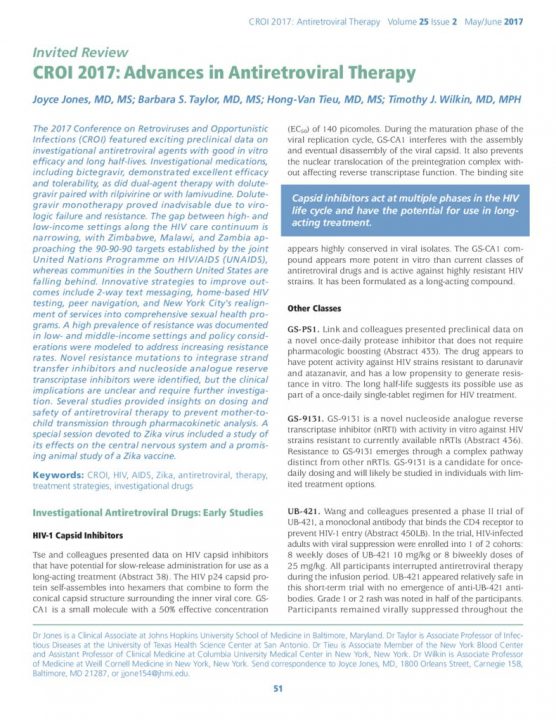
CROI 2017: Advances in Antiretroviral Therapy
Summary
The 2017 Conference on Retroviruses and Opportunistic
Infections (CROI) featured exciting preclinical data on
investigational antiretroviral agents with good in vitro
efficacy and long half-lives. Investigational medications,
including bictegravir, demonstrated excellent efficacy
and tolerability, as did dual-agent therapy with dolutegravir
paired with rilpivirine or with lamivudine. Dolutegravir
monotherapy proved inadvisable due to virologic
failure and resistance. The gap between high- and
low-income settings along the HIV care continuum is
narrowing, with Zimbabwe, Malawi, and Zambia approaching
the 90-90-90 targets established by the joint
United Nations Programme on HIV/AIDS (UNAIDS),
whereas communities in the Southern United States are
falling behind. Innovative strategies to improve outcomes
include 2-way text messaging, home-based HIV
testing, peer navigation, and New York City's realignment
of services into comprehensive sexual health programs.
A high prevalence of resistance was documented
in low- and middle-income settings and policy considerations
were modeled to address increasing resistance
rates. Novel resistance mutations to integrase strand
transfer inhibitors and nucleoside analogue reserve
transcriptase inhibitors were identified, but the clinical
implications are unclear and require further investigation.
Several studies provided insights on dosing and
safety of antiretroviral therapy to prevent mother-tochild
transmission through pharmacokinetic analysis. A
special session devoted to Zika virus included a study of
its effects on the central nervous system and a promising
animal study of a Zika vaccine.
